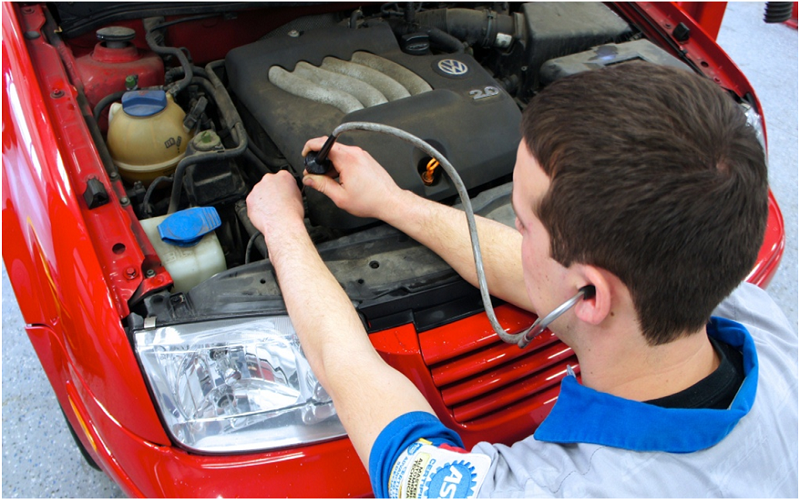Introduction to Domestic Auto Repair
In the realm of automotive maintenance, domestic auto repair holds a significant place. Domestic vehicles, produced by manufacturers within a particular country, often have their own unique characteristics and nuances when it comes to repair and maintenance. This comprehensive guide aims to delve deep into the intricacies of domestic auto repair, covering everything from basic maintenance tasks to complex repairs.
Understanding Domestic Vehicles
What are Domestic Vehicles?
Domestic vehicles refer to automobiles manufactured by companies within a specific country. For instance, in the United States, domestic vehicles include those produced by Ford, General Motors (GM), and Chrysler.
Types of Domestic Vehicles
Domestic vehicles come in various forms, including sedans, trucks, SUVs, and vans. Each type presents its own set of challenges and requirements when it comes to repair and maintenance.
Common Domestic Auto Brands
Some of the most well-known domestic auto brands include Ford, Chevrolet, Dodge, Jeep, and GMC. Each brand has its own loyal customer base and unique features that mechanics must be familiar with when repairing their vehicles.
Basic Maintenance Tasks
Regular Oil Changes
One of the fundamental aspects of domestic auto maintenance is ensuring regular oil changes. Clean oil is essential for proper engine function and longevity.
Tire Rotation and Balancing
Tire rotation and balancing are crucial for even tire wear and optimal performance. Neglecting these tasks can lead to uneven tire wear and handling issues.
Fluid Checks and Replenishment
Checking and replenishing fluids such as coolant, brake fluid, and transmission fluid is vital for the overall health of a domestic vehicle. Low fluid levels can lead to system malfunctions and costly repairs.
Battery Inspection and Maintenance
Regular inspection and maintenance of the battery are necessary to prevent unexpected breakdowns. Corrosion buildup on terminals and low electrolyte levels can hinder battery performance.
Intermediate Repair Tasks
Brake System Maintenance
The brake system is critical for the safety of the vehicle and its occupants. Regular inspection of brake pads, rotors, and brake fluid is essential to ensure optimal braking performance.
Suspension and Steering Repairs
Issues with the suspension and steering can affect the vehicle’s handling and ride comfort. Repairs may include replacing worn-out shocks, struts, or tie rod ends.
Electrical System Diagnosis and Repair
Domestic vehicles are equipped with complex electrical systems that control various functions. Diagnosing and repairing electrical issues require specialized knowledge and tools.
Engine Tune-Ups
Regular engine tune-ups help maintain optimal fuel efficiency and performance. Tasks may include replacing spark plugs, ignition coils, and air filters.
Advanced Repair Techniques
Engine Overhaul
In cases of severe engine damage or wear, an engine overhaul may be necessary. This involves disassembling the engine, replacing worn-out components, and reassembling it to factory specifications.
Transmission Rebuilds
Transmission issues can range from minor fluid leaks to major component failures. Rebuilding a transmission involves disassembling it, replacing worn-out parts, and reassembling it to restore functionality.
Body and Paint Repairs
Accidents or collisions may necessitate body and paint repairs. Skilled technicians use specialized tools and techniques to repair dents, scratches, and other damage.
Diagnostic Tools and Equipment
Modern domestic vehicles are equipped with advanced onboard diagnostics systems. Mechanics use diagnostic tools such as scan tools and oscilloscopes to identify and troubleshoot problems effectively.
Importance of Professionalism and Certification
Certified Technicians
Choosing a certified technician ensures that the repair work is performed to industry standards. Certification programs such as ASE (Automotive Service Excellence) validate the skills and knowledge of automotive professionals.
Quality Parts and Materials
Using quality OEM (Original Equipment Manufacturer) parts and materials is essential for ensuring the longevity and performance of repairs. Inferior parts may compromise safety and reliability.
Customer Service and Satisfaction
Providing excellent customer service is key to building trust and loyalty. Clear communication, transparency, and honesty are crucial aspects of a successful auto repair business.
Conclusion
Domestic auto repair encompasses a wide range of tasks, from basic maintenance to advanced repairs. By understanding the unique characteristics of domestic vehicles and staying updated on the latest repair techniques, automotive professionals can ensure the safety and satisfaction of their customers. With a commitment to professionalism and excellence, the domestic auto repair industry will continue to thrive and serve the needs of vehicle owners worldwide.

